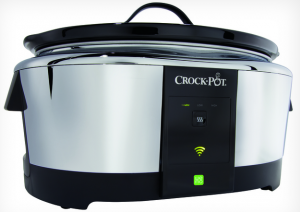 The best thing about crock pots is how incredibly dumb they are. The best, most basic slow cookers just have three settings – off, low, and high. Set it and come back later when your meal is done. Given how great those simple ones work, I’m really questioning the logic behind Belkin’s WoMo Smart Slow Cooker. You can use your smartphone to change the temperature, but really, this is a strange product to add any sort of connectivity to. I use a crock pot all the time…and just can’t see how this is worth $99, not when you can get a barebones (yet incredibly effective) crock pot for $20 from Amazon.
The best thing about crock pots is how incredibly dumb they are. The best, most basic slow cookers just have three settings – off, low, and high. Set it and come back later when your meal is done. Given how great those simple ones work, I’m really questioning the logic behind Belkin’s WoMo Smart Slow Cooker. You can use your smartphone to change the temperature, but really, this is a strange product to add any sort of connectivity to. I use a crock pot all the time…and just can’t see how this is worth $99, not when you can get a barebones (yet incredibly effective) crock pot for $20 from Amazon.
Kolibree smart toothbrush
 Ok, so you know the ‘internet of things’ has truly arrived when someone starts bringing activity tracking to toothbrushes! That’s exactly what Kolibree has done with their connected toothbrush. It’ll analyze your brushing habits and display the information on your smartphone (naturally). I’m a bit skeptical…but it does say it can help track the zones you’re brushing in, which can be nice for those of us who tend to neglect some of the harder to reach areas. It’s expected to be launched this summer via Kickstarter, with prices ranging from $100-200 depending on the model.
Ok, so you know the ‘internet of things’ has truly arrived when someone starts bringing activity tracking to toothbrushes! That’s exactly what Kolibree has done with their connected toothbrush. It’ll analyze your brushing habits and display the information on your smartphone (naturally). I’m a bit skeptical…but it does say it can help track the zones you’re brushing in, which can be nice for those of us who tend to neglect some of the harder to reach areas. It’s expected to be launched this summer via Kickstarter, with prices ranging from $100-200 depending on the model.
New activity trackers unveiled at CES
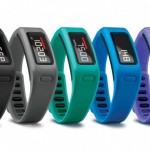 As expected, CES saw a bunch of new activity trackers announced, all of which should be for sale later this spring. First up is the Garmin Vivofit, pictured here, offering a curved always-on display and the usual step and sleep tracking functions. One different feature is adaptive goals, where once you hit a milestone, the goal for the next day is adjusted upwards to keep pushing you. Nice idea, but not so good for someone like me who runs five days a week and wants some rest days in between. I also don’t like the fact that it doesn’t have a rechargeable battery. While the disposable batteries are said to last around a year, it’s still wasteful.
As expected, CES saw a bunch of new activity trackers announced, all of which should be for sale later this spring. First up is the Garmin Vivofit, pictured here, offering a curved always-on display and the usual step and sleep tracking functions. One different feature is adaptive goals, where once you hit a milestone, the goal for the next day is adjusted upwards to keep pushing you. Nice idea, but not so good for someone like me who runs five days a week and wants some rest days in between. I also don’t like the fact that it doesn’t have a rechargeable battery. While the disposable batteries are said to last around a year, it’s still wasteful.
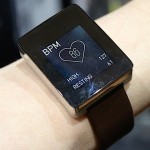 Next up is the Wellograph, watch-like activity tracker that also includes a heartrate monitor. Unlike the Withings Pulse‘s heartrate monitor though, it appears this can monitor that data closer to real-time. It’s pricey at around $300 but does offer features in a form factor that’s different than the usual bracelet styles.
Next up is the Wellograph, watch-like activity tracker that also includes a heartrate monitor. Unlike the Withings Pulse‘s heartrate monitor though, it appears this can monitor that data closer to real-time. It’s pricey at around $300 but does offer features in a form factor that’s different than the usual bracelet styles.
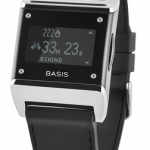 Similar to the Wellograph, though, is the Basis B1, shown here, that monitors heartrate but also attempts to identify phases of sleep (light, deep, REM). It’s cheaper too ($200) and in my opinion, looks nicer.
Similar to the Wellograph, though, is the Basis B1, shown here, that monitors heartrate but also attempts to identify phases of sleep (light, deep, REM). It’s cheaper too ($200) and in my opinion, looks nicer.
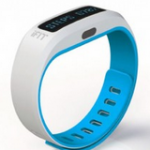 iFit showed off it’s iFit Active band (also available in clip-on form, see link above), which promises to work with internet connected gym fitness equipment to help you track those activities. Of course, it also tracks steps and sleep, syncing the data to your smartphone.
iFit showed off it’s iFit Active band (also available in clip-on form, see link above), which promises to work with internet connected gym fitness equipment to help you track those activities. Of course, it also tracks steps and sleep, syncing the data to your smartphone.
LG’s Lifeband Touch is another me-too product, tracking activity etc in a bracelet-like form factor looking a lot like the Nike Fuelband.
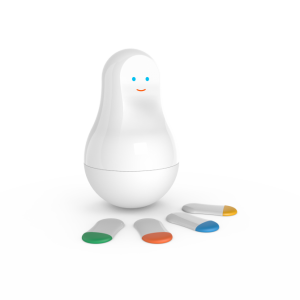 Last up is Mother from Sen.se…a product that bridges the connected self with the connected home. A central base station communicates with ‘cookies’ that detect location, movement, and temperature. In a sense, it’s like the activity trackers, in that each cookie can track steps taken and sleep, but it seems like there’s a lot of potential on the software side of things when a whole family of activity trackers is communicating with a central base station. When that base station can be programmed to send notifications or other actions based upon events, it could get interesting. What’s not clear to me is how useful the cookies would be if scattered throughout the house in stationary locations…there’s potentially a lot of data that could be collected this way. Imagine for example, if ‘Mother’ knows there is a person nearby a stationary cookie…and can see that cookie is reporting a low temperature…can it be programmed to interface with a Nest thermostat to turn up the heat in the house? Or if all the ‘person’ cookies are on one floor, turn down the heat to the other floors? Since cookies can communicate with other cookies, it does raise the potential of a very smart house…but this is heavily software-dependent so is theoretically possible, but also very easy to make it complicated and of limited use. Looks really promising though.
Last up is Mother from Sen.se…a product that bridges the connected self with the connected home. A central base station communicates with ‘cookies’ that detect location, movement, and temperature. In a sense, it’s like the activity trackers, in that each cookie can track steps taken and sleep, but it seems like there’s a lot of potential on the software side of things when a whole family of activity trackers is communicating with a central base station. When that base station can be programmed to send notifications or other actions based upon events, it could get interesting. What’s not clear to me is how useful the cookies would be if scattered throughout the house in stationary locations…there’s potentially a lot of data that could be collected this way. Imagine for example, if ‘Mother’ knows there is a person nearby a stationary cookie…and can see that cookie is reporting a low temperature…can it be programmed to interface with a Nest thermostat to turn up the heat in the house? Or if all the ‘person’ cookies are on one floor, turn down the heat to the other floors? Since cookies can communicate with other cookies, it does raise the potential of a very smart house…but this is heavily software-dependent so is theoretically possible, but also very easy to make it complicated and of limited use. Looks really promising though.
Archos jumps into the connected device market in a big way
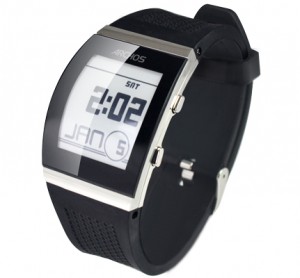 Archos unveiled a slew of new connected products in advance of CES, targeting two main areas. The first is an array of products that’s very similar to Withings to help you track your personal fitness – a wrist-mounted activity tracker, a blood pressure monitor, and a wifi-enabled scale, everything syncing to a smartphone app. The second set of products falls into the connected home category – a weather station and wifi camera, and a tablet computer to help join it all together.
Archos unveiled a slew of new connected products in advance of CES, targeting two main areas. The first is an array of products that’s very similar to Withings to help you track your personal fitness – a wrist-mounted activity tracker, a blood pressure monitor, and a wifi-enabled scale, everything syncing to a smartphone app. The second set of products falls into the connected home category – a weather station and wifi camera, and a tablet computer to help join it all together.
There’s one more bit of technology though that kinda bridges these two…a smartwatch! Well, more than one smartwatch, actually, with the cheapest priced at $50.
This market is becoming rapidly crowded…and I expect that 2014 will see this market explode, especially if Apple jumps in as expected. Start saving your pennies now, it’s going to be an expensive year for gadget lovers!
Look for more details on these products from Archos (and probably a dozen other competitors) once CES opens on January 7th.
Reading novels may boost brain function
A study by Emory University suggests that reading a good fiction book may boost brain function for days, even after finishing the book. It seems that reading triggers a part of the brain that basically tricks it into thinking it’s doing something it’s not…in this case, actively participating in the story. It’s not clear what a boost in this area of the brain actually accomplishes for you, but hey, it’s cool science nonetheless. Read more about the study here.



